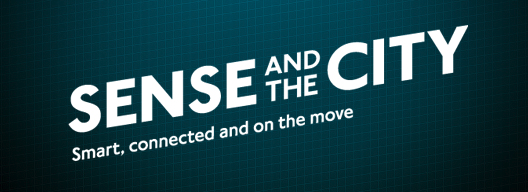
I’m just back from the London Transport Museum where I’ve been listening to Usman Haque, Kevin Brown (Brothers and Sisters) and Sam Hoey (Jason Bruges Studio) talking about the city as a canvas:
Increasingly new technologies such as projection mapping, augmented reality and geo-tagging are being used to transform public and private city spaces. Artists and industry leaders from the worlds of art, architecture and advertising present and discuss imaginative digital interventions, which embroider, invade and subvert urban surfaces
The talks
Shane Walter from onedotzero introduced the speakers and chaired the subsequent panel discussion. He gave a brief overview of the ways in which art has been grafted on to cities. Some of the ones I made a note to follow up on were TXTual Healing, Graffiti Research Lab and this video of a city with everything but the advertising removed (with thanks to onedotzero for sending me the link).
My favourite part of Sam Hoey’s presentation was the idea of being able to race a virtual Usain Bolt (in some form) up to the Olympic Stadium next year – I hope that happens. Meanwhile, Kevin Brown talked about the particulars of the AR apps his company had made – in particular Street Museum and Street Tag – and also pointed out Repudo.
Finally, Usman Haque justified the entry price all on his own. I knew he was responsible for Pachube (impressive enough on its own and neatly summed up as ‘Twitter for things’) but didn’t know that he was behind Primal Source, which I’d come across before and thought was ace.
What impressed me about Usman wasn’t just that he had been responsible for some great work, but that he was able to take a step back and fluently discuss the place of that work within a wider conceptual context. A few things he said stuck with me:
- He asked: what are the structures of participation we can put in place? What happens when you put the means for connectivity in place and let (or empower) people to build on it?
- He’s interested in increasing scale – in work that, through people getting involved in it, becomes bigger and so encourages more people to become involved
- The connected city might well have nothing to do with seamlessness, efficiency and smartness (of the sort packaged up and offered to cities by the largest IT companies). Instead, it may be manifested in the spontaneous creation of systems (see ‘the human microphone‘)
A canvas for what?
The general pitch of the presentations and the discussion was towards using the city as a canvas for art and ‘lighter’ types of interaction. There was an emphasis on surprise, delight and enjoyment.
What was interesting was how, towards the end of the open Q&A, the discussion tended towards, and became dominated by, the use of the city as a canvas for politics and more oppositional expression. A sign of the times, I suppose.
hi chris – thanks for coming down and for your great blog post! cheers…shane